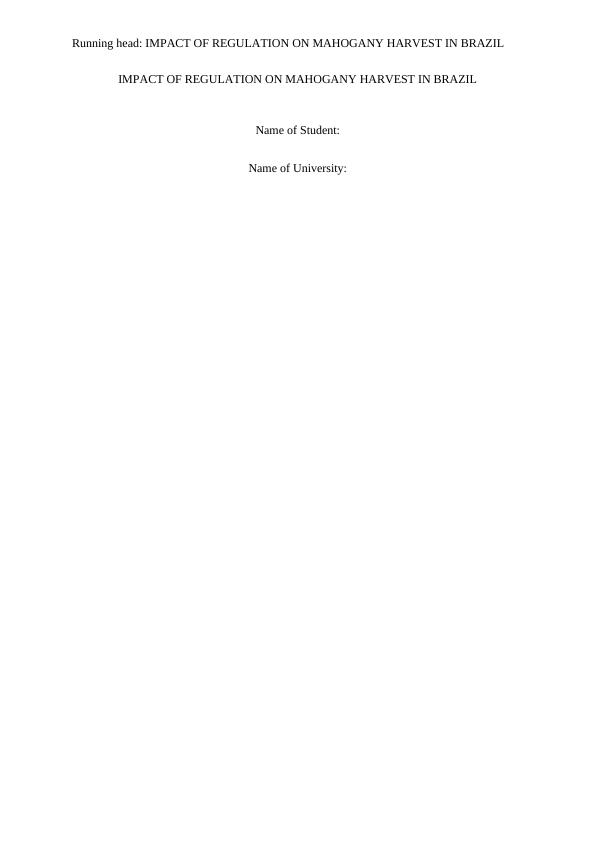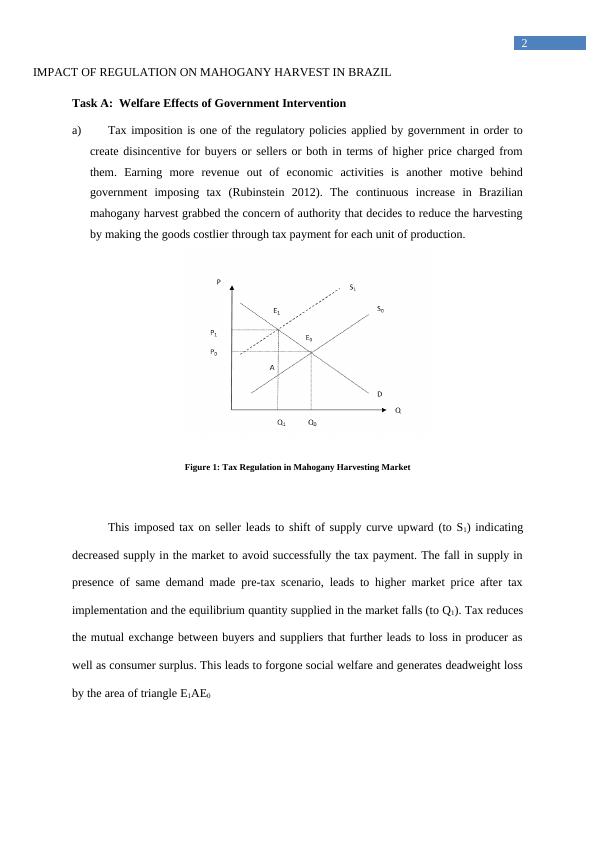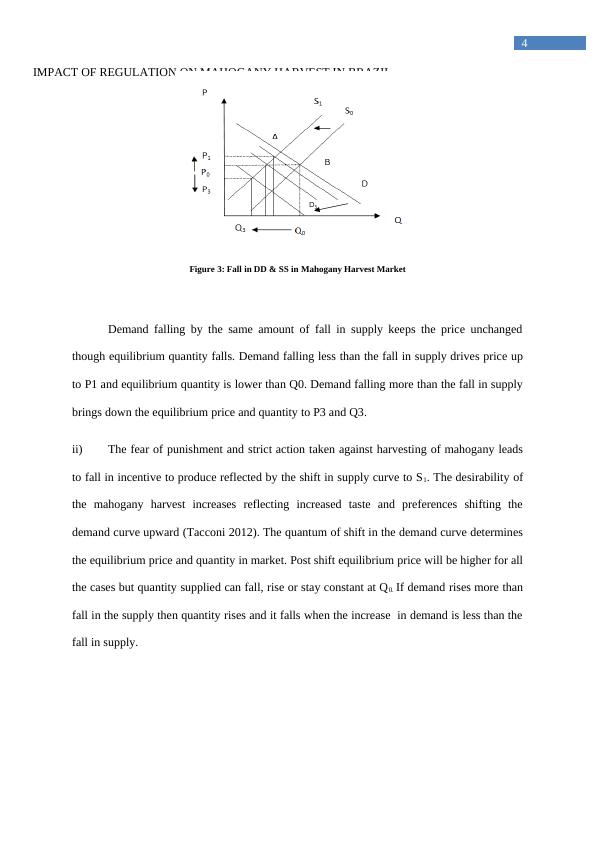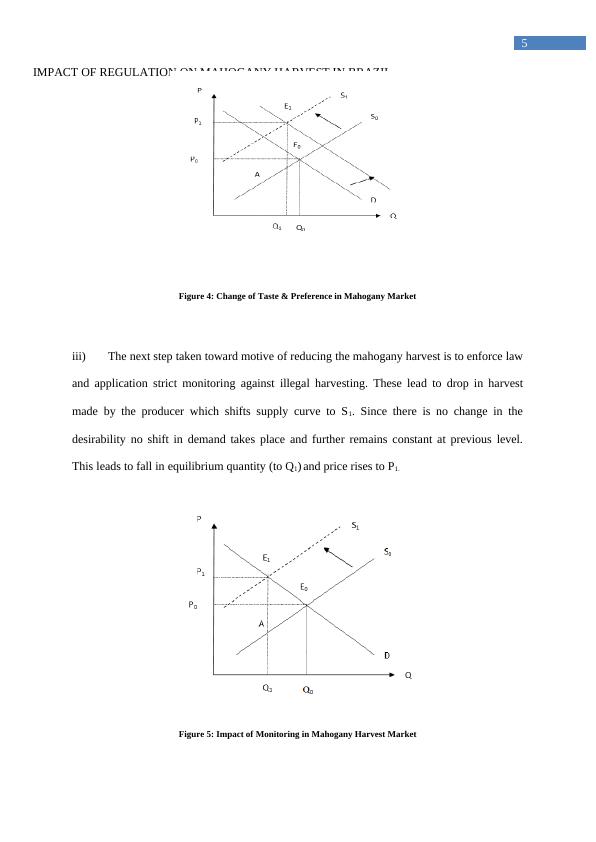Impact of Regulation on Mahogany Harvest in Brazil
21 Pages3301 Words84 Views
Added on 2020-02-18
Impact of Regulation on Mahogany Harvest in Brazil
Added on 2020-02-18
ShareRelated Documents
Running head: IMPACT OF REGULATION ON MAHOGANY HARVEST IN BRAZILIMPACT OF REGULATION ON MAHOGANY HARVEST IN BRAZILName of Student:Name of University:

1IMPACT OF REGULATION ON MAHOGANY HARVEST IN BRAZILTABLE OF CONTENTTask A: Welfare Effects of Government Intervention..............................................................2Task B: Production Decisions...................................................................................................6Task C: Impact on the Homicide Rate....................................................................................10Task D: Lessons and Reflections............................................................................................13REFERENCE...........................................................................................................................16

2IMPACT OF REGULATION ON MAHOGANY HARVEST IN BRAZILTask A: Welfare Effects of Government Interventiona)Tax imposition is one of the regulatory policies applied by government in order tocreate disincentive for buyers or sellers or both in terms of higher price charged fromthem. Earning more revenue out of economic activities is another motive behindgovernment imposing tax (Rubinstein 2012). The continuous increase in Brazilianmahogany harvest grabbed the concern of authority that decides to reduce the harvestingby making the goods costlier through tax payment for each unit of production. Figure 1: Tax Regulation in Mahogany Harvesting MarketThis imposed tax on seller leads to shift of supply curve upward (to S1) indicatingdecreased supply in the market to avoid successfully the tax payment. The fall in supply inpresence of same demand made pre-tax scenario, leads to higher market price after taximplementation and the equilibrium quantity supplied in the market falls (to Q1). Tax reducesthe mutual exchange between buyers and suppliers that further leads to loss in producer aswell as consumer surplus. This leads to forgone social welfare and generates deadweight lossby the area of triangle E1AE0

3IMPACT OF REGULATION ON MAHOGANY HARVEST IN BRAZILb)Quota is another regulatory policy implemented by the government that imposes restriction on supplies in the market. It sets limit on how much can be produced and supplied in the market (Seydack 2012). To tackle the growing concern regarding mahogany harvest, government imposed quota on maximum harvest amount. This makes the supply curve vertical at the declared quota amount (at Q1) beyond which the supplier can’t maintain market supply ethically irrespective of the price movement in the market. The vertical supply curve now leads the equilibrium price at P1 which is pretty higher than the previous equilibrium (E0) that is before imposition of quota. The area of triangle ABC depicts deadweight loss creating a leakage the social welfare.Figure 2: Quota in Mahogany Harvesting Marketc)i) The stringent action taken on sellers in terms of punishment can create disincentive tosuppliers shifting the supply curve toward left to S1. The undesirability of mahoganywoods and related products to consumers fall in demand that further causes downwardshift of the demand curve. The fall in demand captures the changed taste and preferencemade by the consumer. Equilibrium price and quantity post these changes in demand andsupply depends on the quantum of the fall.

4IMPACT OF REGULATION ON MAHOGANY HARVEST IN BRAZILFigure 3: Fall in DD & SS in Mahogany Harvest MarketDemand falling by the same amount of fall in supply keeps the price unchangedthough equilibrium quantity falls. Demand falling less than the fall in supply drives price upto P1 and equilibrium quantity is lower than Q0. Demand falling more than the fall in supplybrings down the equilibrium price and quantity to P3 and Q3.ii)The fear of punishment and strict action taken against harvesting of mahogany leadsto fall in incentive to produce reflected by the shift in supply curve to S1. The desirability ofthe mahogany harvest increases reflecting increased taste and preferences shifting thedemand curve upward (Tacconi 2012). The quantum of shift in the demand curve determinesthe equilibrium price and quantity in market. Post shift equilibrium price will be higher for allthe cases but quantity supplied can fall, rise or stay constant at Q0. If demand rises more thanfall in the supply then quantity rises and it falls when the increase in demand is less than thefall in supply.

5IMPACT OF REGULATION ON MAHOGANY HARVEST IN BRAZILFigure 4: Change of Taste & Preference in Mahogany Marketiii) The next step taken toward motive of reducing the mahogany harvest is to enforce lawand application strict monitoring against illegal harvesting. These lead to drop in harvestmade by the producer which shifts supply curve to S1. Since there is no change in thedesirability no shift in demand takes place and further remains constant at previous level.This leads to fall in equilibrium quantity (to Q1)and price rises to P1.Figure 5: Impact of Monitoring in Mahogany Harvest Market

End of preview
Want to access all the pages? Upload your documents or become a member.
Related Documents
Task A: Welfare Effects of Government Interventionlg...
|18
|3266
|334
MAE101 Economic Principleslg...
|24
|2625
|382
Brazilian Government Impose Tax on Producers of Mahoganylg...
|10
|2196
|94
TASK AWELFARE EFFECTS OF GOVERNMENT INTRODUCTION 1 TASK B PRODUCTION DECISIONSlg...
|20
|2955
|127
Economics Assignment: Equilibrium Price and Quantitylg...
|12
|2377
|114
Economics Assignment Sample (pdf)lg...
|12
|876
|118
